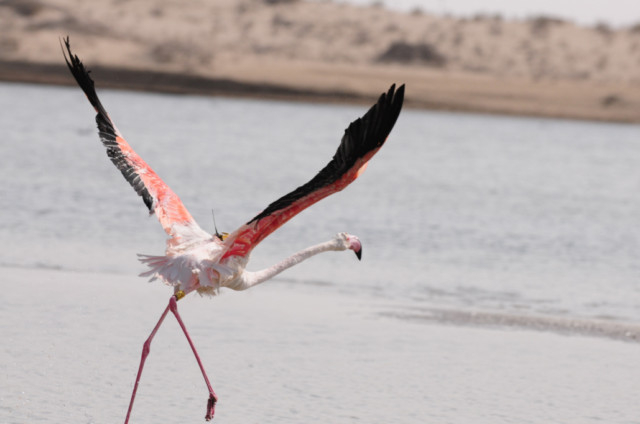
Abu Dhabi: Untold flocks of migratory birds that wintered in the tropics are stopping over in the UAE on their return home, conservation officials say.
Professional bird-watchers are happy that their feathered friends did not miss stopping by the UAE as part of their annual migration routes this year.
Three adult Marsh Harriers, which were satellite tagged at Abu Dhabi’s Al Wathba Wetland Reserve in January 2011, returned to the UAE this year on their autumn migration, a senior official told Gulf News.
The Marsh Harriers are birds of prey of the Harrier subfamily. They are medium-sized raptors and the largest and broadest-winged Harriers. Most of them are associated with marshland and dense reed beds
“Of the three birds that returned after spending summer in Kazakhstan and Russia, two were in Al Wathba wetland reserve in Abu Dhabi, while the third bird was in Bu Syayeef area,” said Dr Salim Javed, Manager of the Terrestrial Assessment and Conservation Programme at the Environment Agency - Abu Dhabi (EAD), said.
The Marsh Harriers are just a few of the thousands of birds which flock to Al Wathba every year.
As part of annual migration, thousands of birds migrate through UAE during autumn and spring migrations, while some pass through on the way to their southbound destinations. Some others stopover in the country to spend the winter and many of them come to Al Wathba wetland Reserve in Abu Dhabi.
As the summer begins, Al Wathba Reserve — once buzzing with thousands of migratory birds during winter — will become quiet in the coming months.
The migratory birds included small birds weighing around 20-25 grams as well as large birds weighing around 1.5-2.5 kg such as Greater Flamingos.
EAD monitors long-distance migration of important bird species using satellite telemetry.
Species such as flamingos, ospreys and Sooty falcons have been successfully tracked over the past few years.
“Sightings of our satellite tagged birds in other emirate and in other countries creates interests among bird watchers and scientific community and these birds serve as goodwill ambassadors for the country, Dr Javed said.
These sightings and the work done under satellite tracking programme of the agency is well recognised internationally and has provided new scientific information on migration of some of the key migratory species, some for the very first time, he said.
The EAD has also tracked globally threatened Spotted Eagles since last two years and two birds which are currently being tracked were recently back from their breeding areas in Kazakhstan and Russia. While one of the birds was in Dubai, the other one was in Al Jahra area in Kuwait.
The bird in Al Jahra was seen by a local birder who sent a beautiful picture of the bird as it moved around the area, Dr Javed said.













